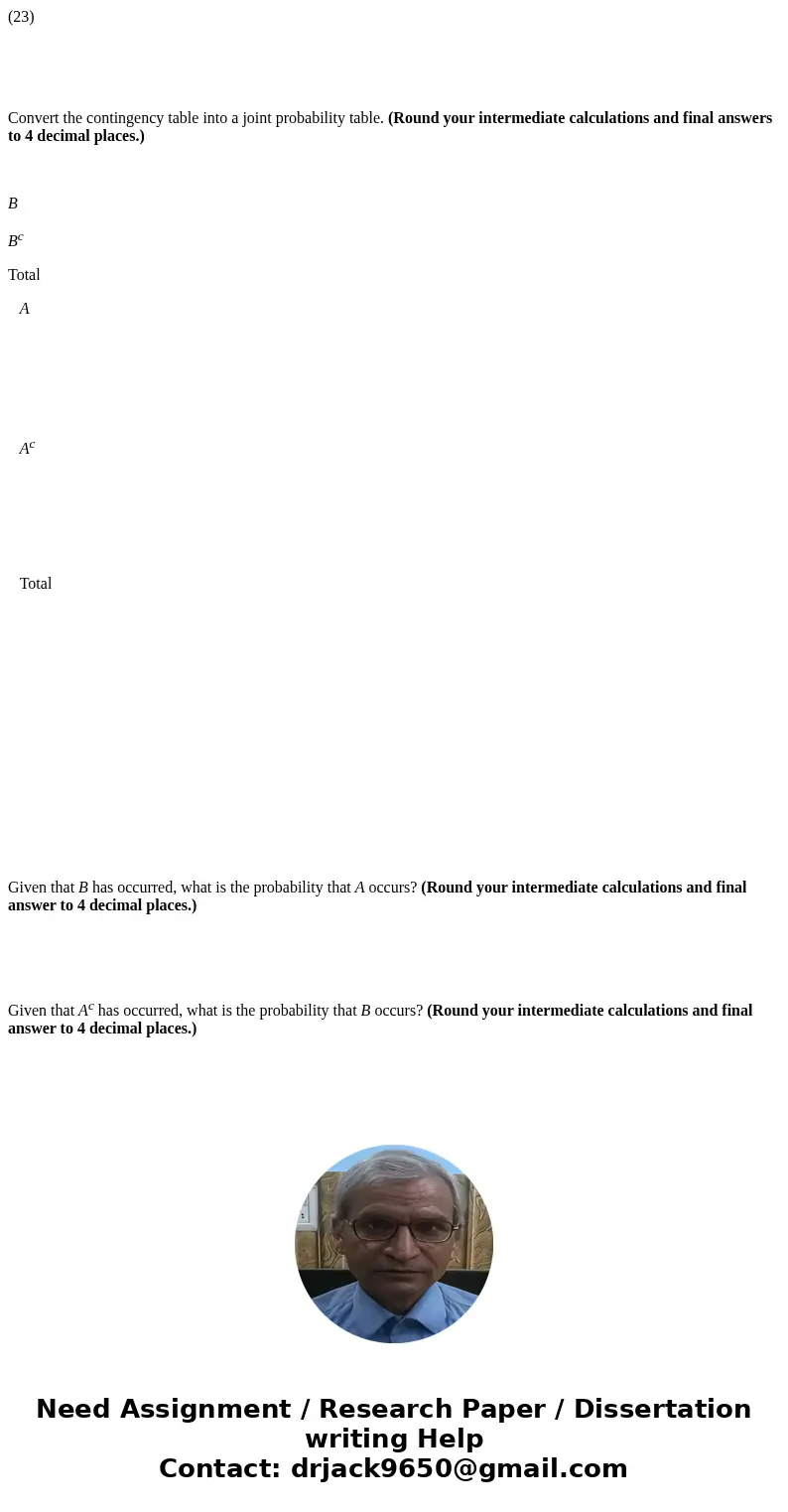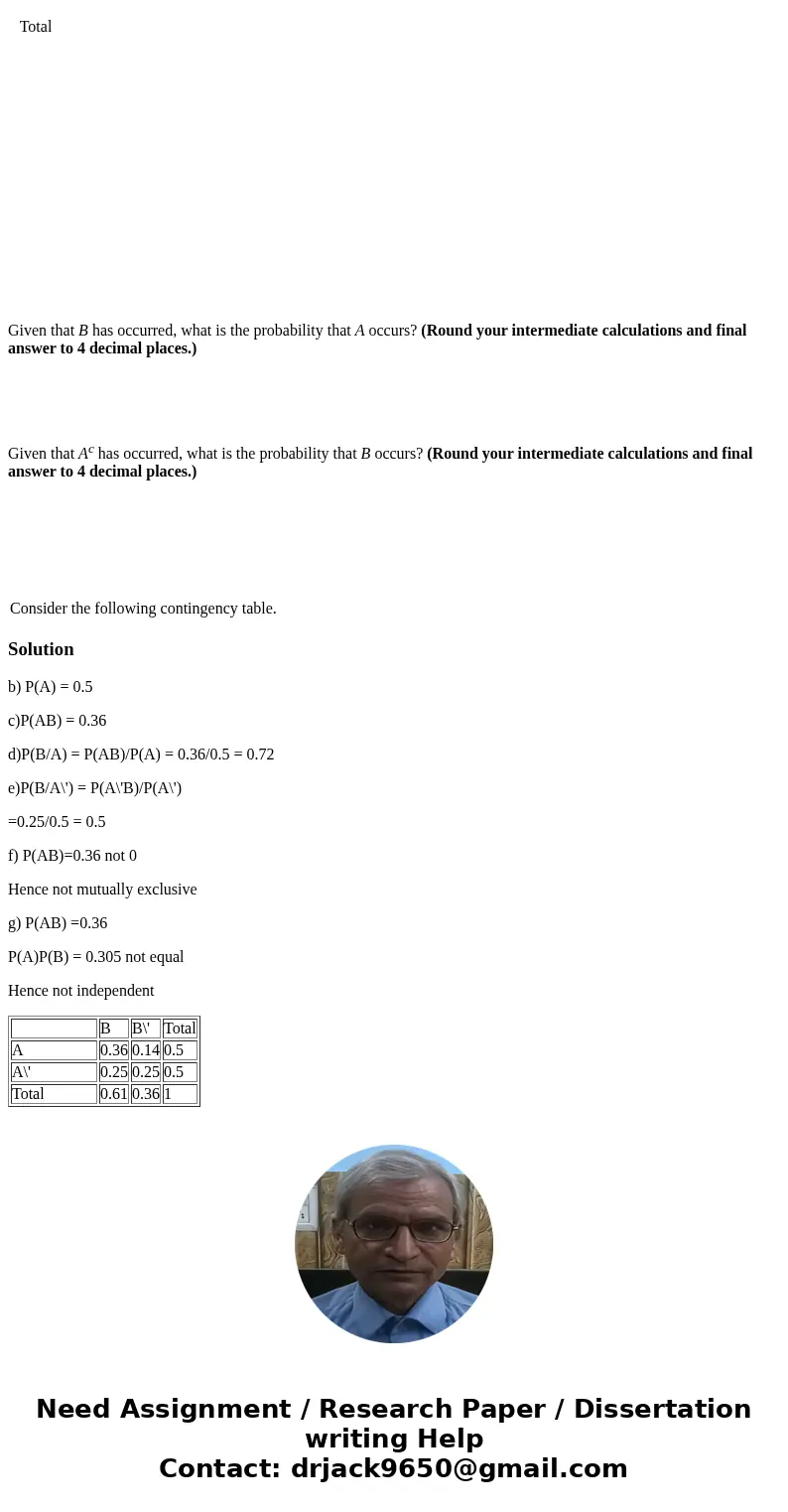23 Convert the contingency table into a joint probability ta
(23)
Convert the contingency table into a joint probability table. (Round your intermediate calculations and final answers to 4 decimal places.)
B
Bc
Total
A
Ac
Total
Given that B has occurred, what is the probability that A occurs? (Round your intermediate calculations and final answer to 4 decimal places.)
Given that Ac has occurred, what is the probability that B occurs? (Round your intermediate calculations and final answer to 4 decimal places.)
| Consider the following contingency table. |
Solution
b) P(A) = 0.5
c)P(AB) = 0.36
d)P(B/A) = P(AB)/P(A) = 0.36/0.5 = 0.72
e)P(B/A\') = P(A\'B)/P(A\')
=0.25/0.5 = 0.5
f) P(AB)=0.36 not 0
Hence not mutually exclusive
g) P(AB) =0.36
P(A)P(B) = 0.305 not equal
Hence not independent
| B | B\' | Total | |
| A | 0.36 | 0.14 | 0.5 |
| A\' | 0.25 | 0.25 | 0.5 |
| Total | 0.61 | 0.36 | 1 |


 Homework Sourse
Homework Sourse